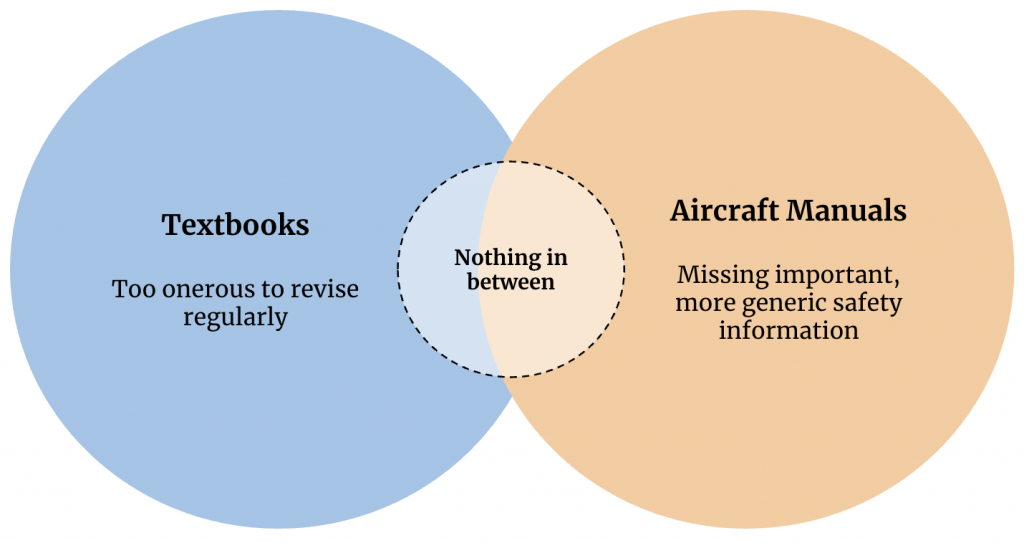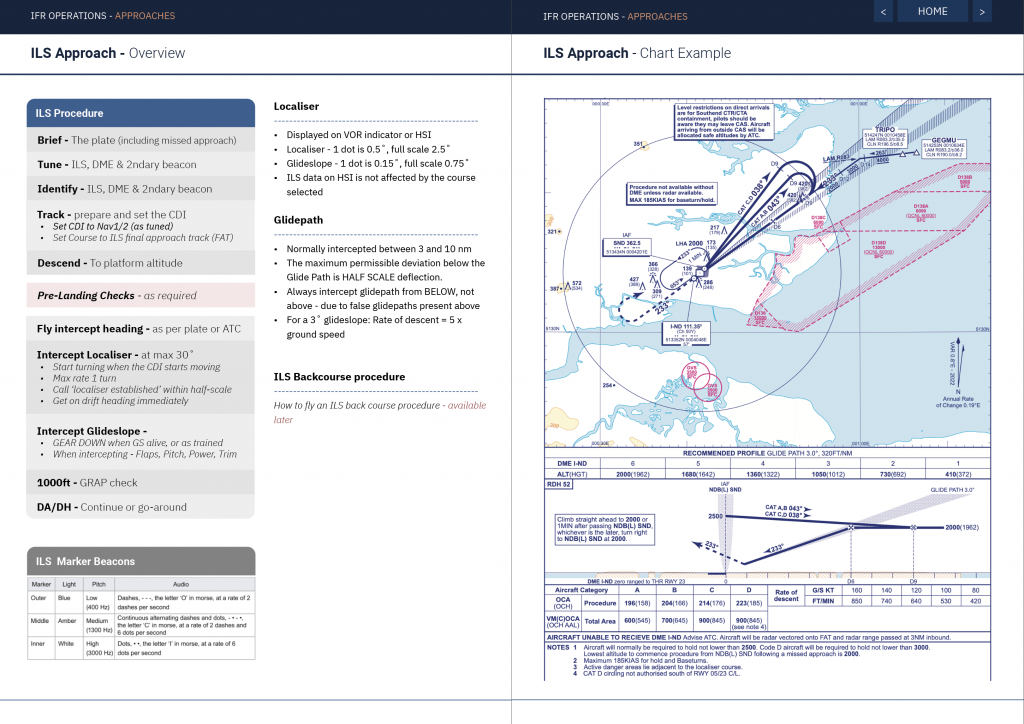Problem
Pilots have to remember and apply a substantial amount of information to safely conduct their flights. This can range from tedious regulatory information to specifics of certain weather phenomena. Career pilots have the advantage of constant repetition and standard operating procedures that help internalise the information they need to know. Non-career pilots, who are unable to fly so regularly, do not have the same luxury.
Current pilot publications generally comprise of two main categories: theoretical textbooks used during training, and aircraft specific manuals and checklists:
- Theoretical textbooks contain important information helpful for safe decision-making (e.g. the risks of particular weather phenomena), but are too onerous to revise regularly, before every flight, due to the heavy structure and content
- Aircraft checklists and manuals focus predominantly on aircraft specific procedures, and neglect generic safety-critical information that are available in theoretical textbooks.
- Current handbooks published by aviation authorities, such as the UK CAA Skyway Code, are a step in the right direction, but are still not optimally designed for real world application, and miss a variety of key information and sections.

Proposal
The proposal is a data driven, quick reference handbook for non-career pilots, that allows one to refresh their memory on critical safety information, and is optimised towards the following objectives:
- Content is structured for direct application and safe decision making. This means every high risk phenomena (such as a thunderstorm cloud, or Icing) is described in terms of Cause, Identification, Risks and Actions:
- Cause: What conditions results in this phenomena occurring (e.g. temperature range for Icing)
- Identification: How pilots can identify this phenomena, e.g. visually, through aircraft handling differences, or through chart symbols
- Risks: What risks are posed by this phenomena to the safe operation of a flight (e.g. Icing can result in increased stall speed, lower critical angle of attack, etc)
- Actions: What actions are suggested for pilot consideration to mitigate the risk (e.g. usage of de-ice, carb heat, changing flight levels, etc)
- Content is prioritised and selected using incident and crash data; ensuring that the top reasons for fatal accidents are addressed (such as loss of control, inadequate response to engine failure, and weather)
- Can be viewed on a mini/standard iPad or printed in standard A5 book size; to allow easy integration and usage with other pilot documents and materials, and the iPads already used by pilots for planning & navigation.
Status
The first Alpha draft version of the handbook is currently being tested as part of the pilot feedback group.

Preview
Sample pages to illustrate the intended structure:



Get Access
Get in touch to get access to the Alpha version and become part of the pilot feedback group.